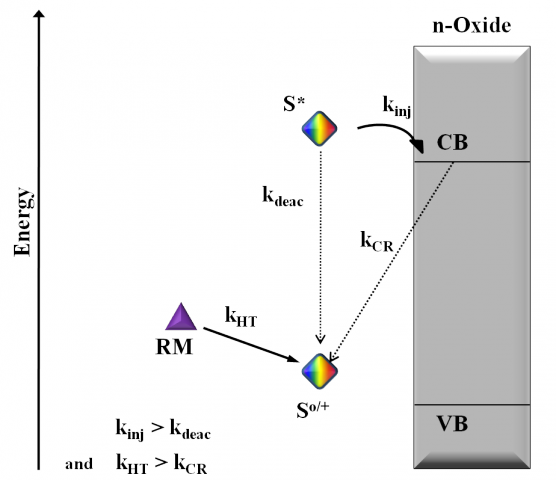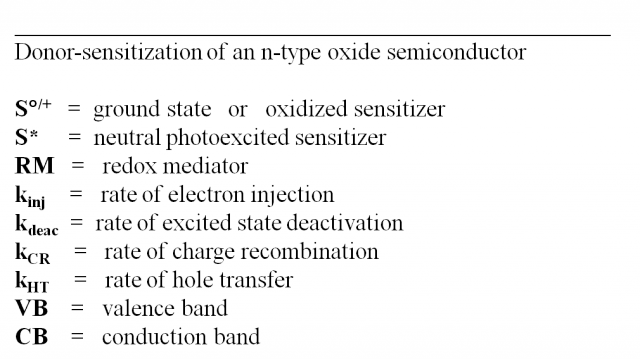We are interested in the fundamental properties of photoactive and electroactive compounds, especially in the context of their operation in excitonic solar cells and other optoelectronic devices.
A recurring theme in our work is the study of electron transport between molecular semiconductors and metal oxide semiconductors. Presently, the dominant paradigm for this interaction is the donation of an electron from a neutral photoexcited sensitizer into an n-type metal oxide semiconductor (see figure below). The excited state is typically an MLCT (metal-ligand charge transfer) or singlet state, and one electron is transferred per absorbed photon.
We are interested in altering this paradigm in various ways, including:

1) Change the electron-injecting species from a singlet excited state donor-sensitizer to a triplet excited state donor-sensitizer.
2) Change the electron-injecting species from a neutral photoexcited sensitizer to a radical anion sensitizer (an 'acceptor-sensitizer').
3) Enable singlet fission among sensitizers, to provide transfer of two electrons per absorbed photon.
4) Change the oxide semiconductor to a p-type oxide, such as Cuprous O xide (Cu2O) and draw electrons from the oxide into neutral photoexcited or radical cation sensitizers.
xide (Cu2O) and draw electrons from the oxide into neutral photoexcited or radical cation sensitizers. 
In addition to these approaches, we are also exploring:
5) Templated electrodeposition of vertically aligned nanorods of oxide semiconductors onto pre-formed electrode substrates (such as conductive glass).
6) Synthesis of new classes of molecular semiconductor compounds as ligands and/or chromphores/sensitizers.
7) Optical Limiting using synergy between organic chromophores and Au colloids.
These projects vary in scope, with some more active and more complex than others. The links in the navigation menu contain more detailed explanations of our research.

